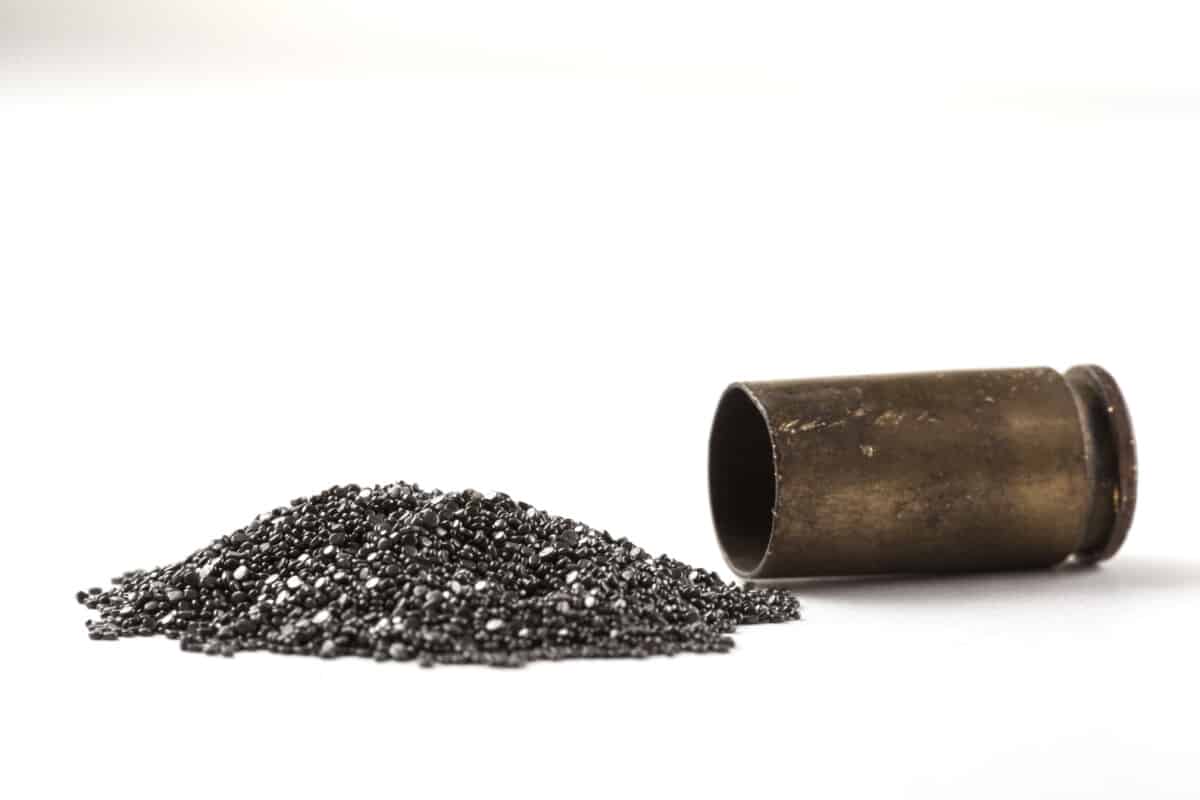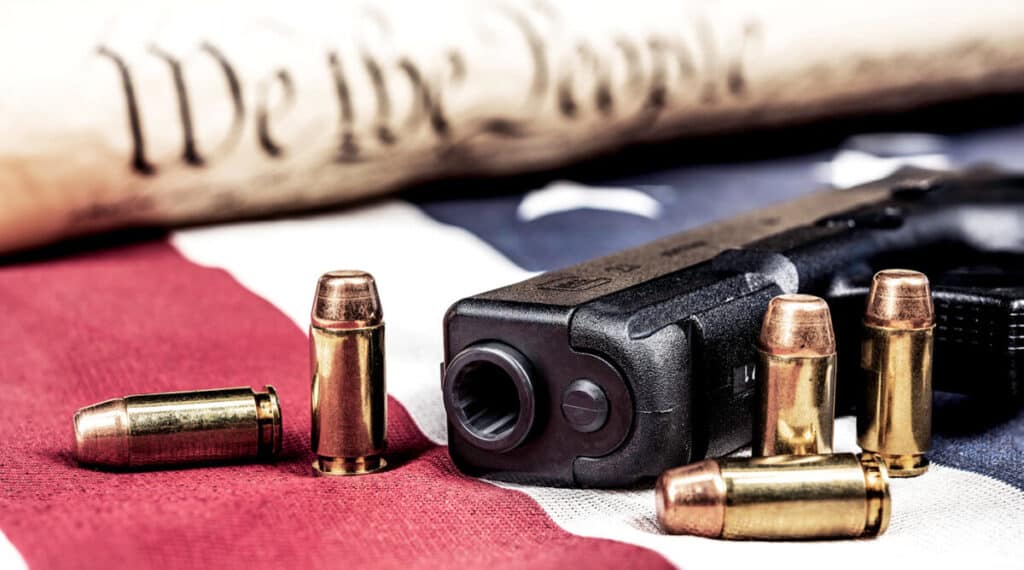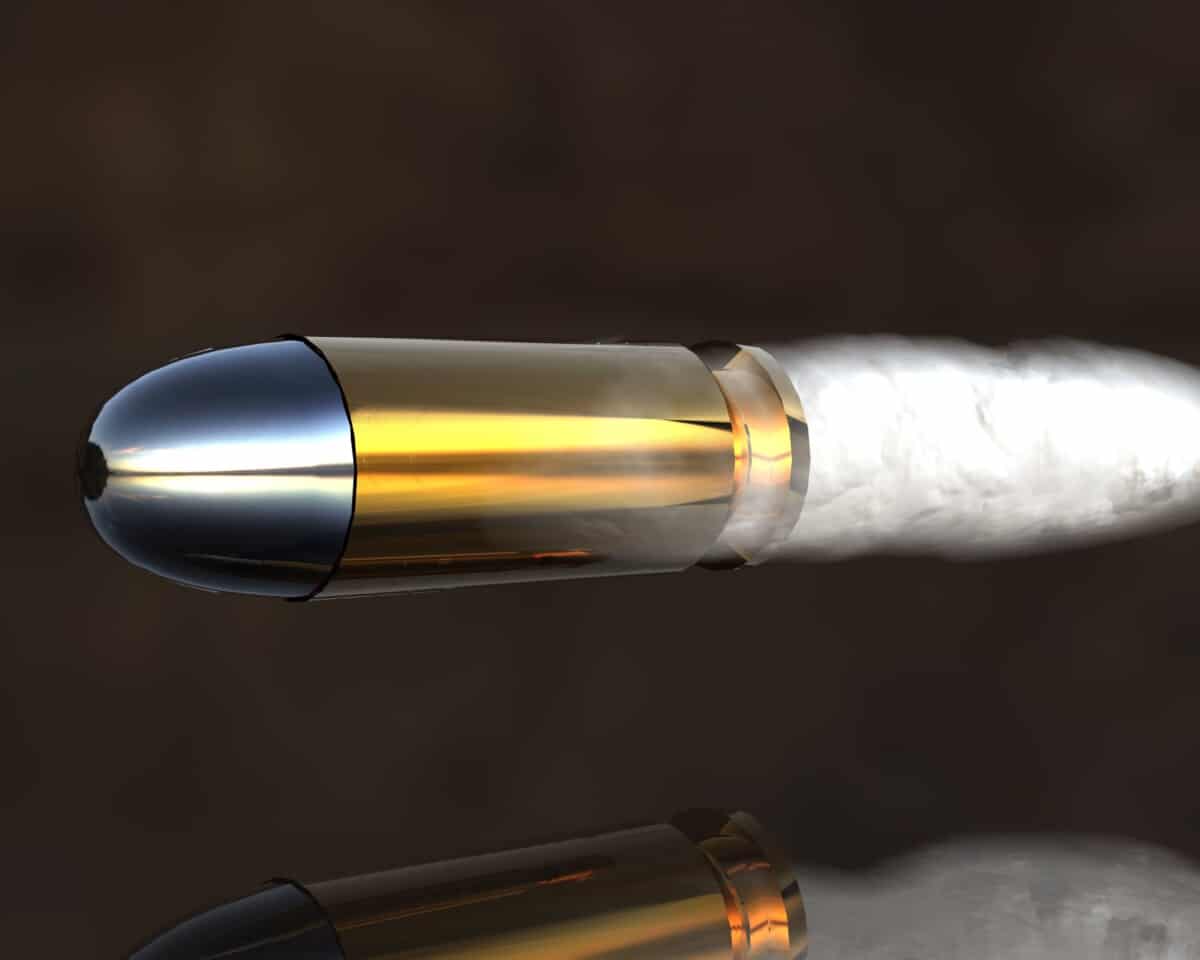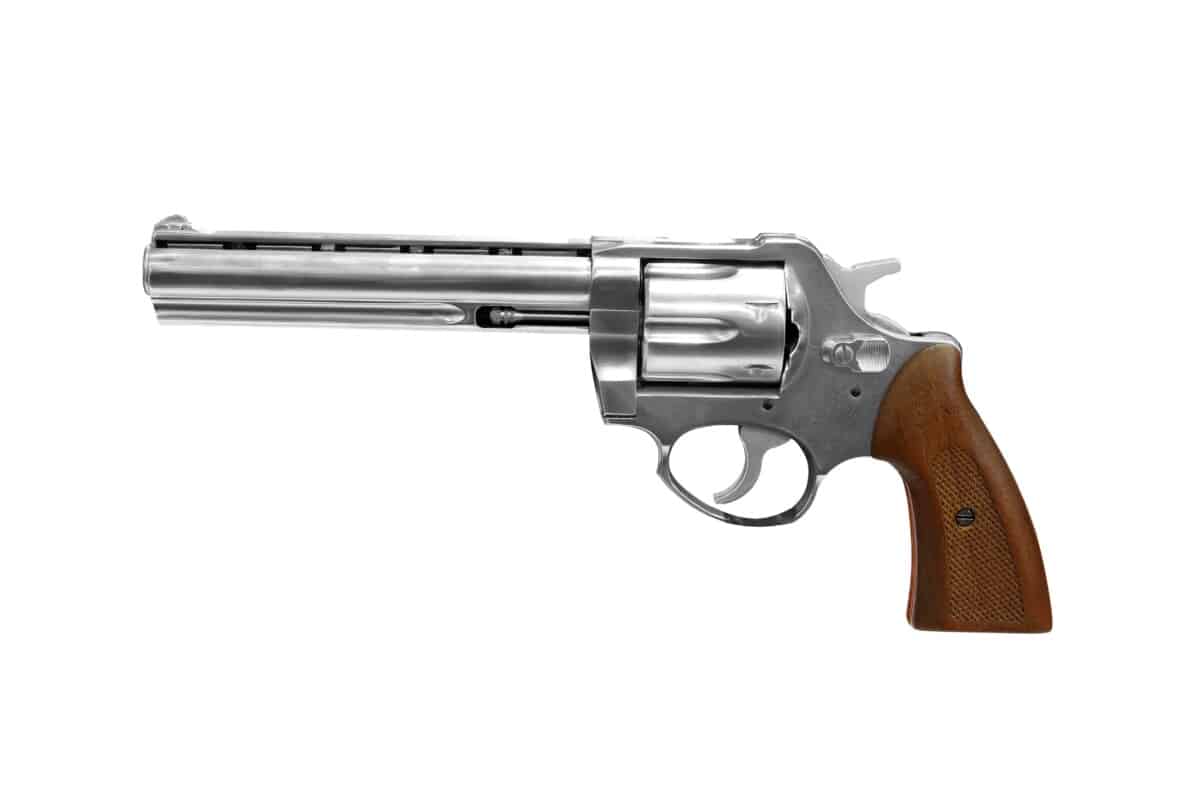5 Most Popular Pistol Reloading Powders (Plus my favorite!)

Members of the shooting community reload pistol ammunition for a variety of reasons. These can include cost savings, commercial availability, and tailoring a load for specific needs. The three consumable components that every reloader needs to purchase are bullets, primers, and smokeless gunpowder.
Choosing a smokeless powder for reloading pistol ammunition is a critical step. Since no one powder is suitable for every application, knowing what powder to use is important for both function and safety. And sometimes, with so many options available, it can be a confusing first step for a new reloader.
I started reloading just over 20 years ago before I was old enough to go to the store and buy ammunition. My specialty is reloading bulk pistol ammunition for competitive shooting. Keep reading to find out what my 5 favorite pistol reloading powders are. I’ll answer that along with why they are, and why not all powders are created equal.

Powder Selection 101
For those who are very new to reloading, or haven’t started yet, I highly encourage you to read this entire article, not just the selections. Some of the least helpful advice given by seasoned reloaders goes along the lines of, “I use ‘product X’ and like it.”
For me, understanding why I do something is just as important as knowing how to do it. Choosing a smokeless powder for pistol reloading is no exception. Before I list my five favorite powders below let me explain some basic concepts which help guide my choices.
None of the below information is meant to replace the safety warnings contained in a reloading manual. The goal is to explain how I integrate these ideas into powder selection.
Load Data: Load data are the recipes published by manufacturers of gunpowder and bullet makers in the firearms industry. They will be specific to at least the cartridge, bullet weight, and the weight of the powder charge. Most modern load data will also list the specific bullet and primer being used.
I have always used the freely provided load data from the gunpowder distributors. With the assistance of the internet, load data has never been more available than it is now. Some manuals which provide load data can be bought as well, though I have never felt the need to purchase them.
Load Work-up: The process of working up a safe load is the responsibility of each and every reloader. This is where a person will take the published load data and determine it to be safe and functional in their individual firearms.
By starting at a reduced powder load, minor variances in the reloading process and the firearm can be determined to produce safe results. Some of these variables can include; choosing a different primer or bullet (of the same weight) than listed in the load data, overall length, and crimp.
I will typically work every load up to the maximum recommended powder charge while watching for pressure signs. I use a chronograph to assist in interpreting results, but that is not completely necessary. A good load will manifest itself by the consistent function of the firearm, externally clean brass, and appropriate recoil for the cartridge and expected velocity.
Burn Rate: This is a very important aspect of gunpowder because it makes one powder suitable for .45 ACP, and another powder suitable for a rifle cartridge It also makes the powder used for .45 ACP completely unsuitable for a rifle cartridge and dangerous to use.
The burn rate of a smokeless powder is a way to describe how quickly it generates pressure. Some manufacturers publish burn rate charts, which will list different powders in their relative quickness.
It’s more important to understand if a powder is considered fast, medium, or slow for what you want to reload. A simple way to do this is to look at a number of powders for a specific cartridge and bullet weight. The lower the maximum charge, the faster the powder is for that cartridge. The higher the maximum charge, the slower it is.
The benefit of a faster powder is that it will be very efficient, and will give more feet per second per grain of powder. The benefit of a slower powder is that it will allow for a higher maximum velocity. The slower the powder for any given cartridge, the closer it needs to be to maximum load for consistent velocity. Some slower powders also give poor function at lower charge weights.
Charge Weight: When reloading most pistol cartridges, a little powder goes a long way. It is not uncommon for a pound of powder to yield more than a thousand reloads. This also comes with the drawback that many brass casings can easily accept a dangerous double-charge of powder with minimal visual differences.
I don’t worry about charge weight as it factors into the cost of reloading. The bullet and the case represent the majority of the cost of a reload for pistol cartridges. If I am getting the results I want, I don’t care if I am using 4 grains or 12 grains of powder.
Physical Form: Smokeless powders are sold in three common physical forms; flake, spherical, and extruded. This is important for pistol reloading because of the very small charge weights that typically used. I don’t recommend any powder for pistol reloading other than those which are of the spherical and small flake variety.
Many reloaders have experienced what is called a “squib load”, where a cartridge received very little, or even no gunpowder during the reloading process. The most common cause of a squib load that does not stem from operator error is the powder not flowing freely from the powder measurer into the case.
Using a spherical or small flake powder reduces this risk enough to essentially eliminate it. I have yet to see a medium or large flake gunpowder, typically meant for shotgun reloading, produce such amazing results that it is worth risking squib loads. I can’t emphasize this enough.
Spherical powders are also referred to as “ball” and/or flattened spherical. There is no clear line drawn between what is a flattened spherical powder and what is a small flake powder.
Accuracy: This isn’t going to be a topic of discussion, and honestly shouldn’t be a point of emphasis when discussing pistol powders in general. The shooter is almost always the limiting factor.
Even when a pistol is placed in a mechanical rest for accuracy testing, each gun will still have some level of individual preference.
Very Fast Pistol Powder: Ramshot Competition

Ramshot Competition is a small flake powder that is most commonly used for shotgun reloading but has some pistol applications.
As a very fast powder, it tends to deliver reduced velocity in most pistol cartridges. This powder is an ideal choice for .45 ACP and .38 Special target loads and can be used in low-recoil 9mm Luger and .40 S&W applications as well.
My typical uses for this powder are .45 ACP loads for shooting competitions and 9mm Luger loads for the pistol caliber carbine when only standard pistol velocities are desired out of a 16″ barrel.
As with all Western Powder (now owned by Hodgdon) products, the free load data is very extensive.
This powder is also light grey in color, which makes it easy to see at the bottom of a brass casing. This can be helpful when visually checking the powder charge in a long and tall case like the .38 Special.
Alternative Choices are Accurate Nitro 100NF and Winchester WST, but Ramshot Competition has more extensive load data than either of these other powders.
Fast Pistol Powder: Accurate #2 (My Favorite)
Accurate #2 is an interesting powder in that it is one of the rare “low density” spherical powders. It has all the metering benefits that come with a spherical powder but has significantly more volume per charge weight than other options.
The benefits of this are twofold. First, it allows for much finer adjustment in charge weight on almost all powder metering devices because they measure powder by volume and not weight. This is helpful when using a powder measurer like the Lee Auto-Disk, which uses interchangeable cavities. Each change in cavity size results in a smaller change in charge weight, giving the user more adjustments.
The second benefit is Accurate #2 provides excellent case fill for a spherical powder, and a double-charge will generally be visually obvious.
Accurate #2 also has the benefit of being light grey in color, making it very easy to visually confirm a powder charge in a case.
This powder will deliver standard velocities in .38 Special and .45 ACP, and close-to factory velocities in 9mm Luger and .40 S&W. It can be used for reduced power magnum revolver loads as well.
An alternative choice is Shooter’s World Clean Shot. It is a very, very similar powder to Accurate #2.
Medium Pistol Powder: Winchester AutoComp

Winchester Auto-Comp is a traditional, fine-grained spherical powder that is suitable for a large variety of pistol reloading applications. It is unofficially marketed to USPSA competitors for the purpose of reloading 9mm Major, but has plenty of standard pressure applications.
It burns clean and is ideal for reproducing factory power ammunition. If reloading is a means to an end, and shooting ammunition at a reduced cost is the primary goal, this is a great choice.
As a dense, dark-colored spherical powder, a double-charge will not be as easy to visually identify as Accurate #2. But, visual identification should always be a last resort for spotting problems. It should never be viewed as a replacement for solid reloading fundamentals.
There is a huge amount of competition at this burn range and there are many other excellent powders to choose from. Hodgdon CFE Pistol, Ramshot True Blue, and Shooter’s World Ultimate Pistol should all be considered equals when compared to AutoComp.
Accurate #5 is another suitable choice but can perform poorly at low charge weights. At maximum load, it is an excellent powder.
Medium-Slow Pistol Powder: Accurate #7
Accurate #7 is a fine-grained spherical powder that delivers impressive velocities in 9mm Luger and 40 S&W while giving traditional velocities in magnum revolver cartridges and the 10mm Auto. +P load data for 9mm Luger is available and gives almost equal performance to boutique loadings from Buffalo Bore and Double Tab.
What surprised me about Accurate #7 when I first tried it was how far superiors it was to Accurate #5. Not only does Accurate #7 have a higher velocity ceiling, but it is more consistent at medium charge weights over the chronograph. It also burns very cleanly.
Alternative choices to Accurate #7 are Shooter’s World Auto Pistol and Hodgdon HS-6. HS-6 is an older powder that tends to be a bit sootier, and Auto Pistol contains significant gaps in its load data. Accurate #7 really does stand out at this burn rate.
I’ll briefly mention one other powder because it’s popular enough to warrant it. I don’t recommend Alliant Power Pistol though it isn’t necessarily a bad powder. It delivers impressive velocity, but it’s also flashy and concussive when fired. Many people enjoy this novelty effect and perhaps it’s best in that role.
I’ve seen more than one person talking about extremely impressive velocity numbers with Power Pistol, but not want to disclose charge weight because it’s over the maximum or not a published load. Modern Alliant load data is easily the least extensive of all major powder suppliers.
Magnum Pistol Powder: Accurate #9

Accurate #9 is a fine-grained spherical powder that is used for chasing maximum velocities in powerful pistol cartridges and even has some light rifle applications. Some people prefer the even slower Accurate 4100 (also sold as Ramshot Enforcer) but in pistol applications, they are very similar.
I use a very small amount of this powder, exclusively in .357 Magnum loads. It is popular in that and other magnum revolver cartridges, as well as for maxing out the 10mm Auto.
The other extremely popular alternative is Hodgdon H110 / Winchester 296. I’ve used both, and they are both excellent. Hodgdon inflates their velocity numbers though by testing out of a 10″ barrel, and there is no 10mm Auto load data available for H110.
Conclusion
These are my favorites powders for pistol reloading, and I’ve tried to explain why I prefer them over similar powders. If you are new to the practice, these are great starting points to meet your reloading needs.
I can also confidently say that they will all meter well out of any style of powder dispenser, which is the only way time-efficient to reload pistol ammunition. There is no danger of buying one of these powders and being forced to hand-weight the charges to avoid squibs.
